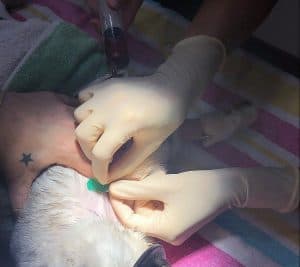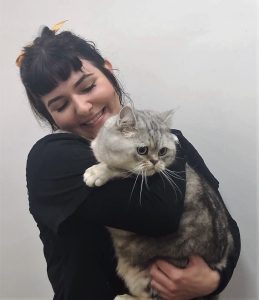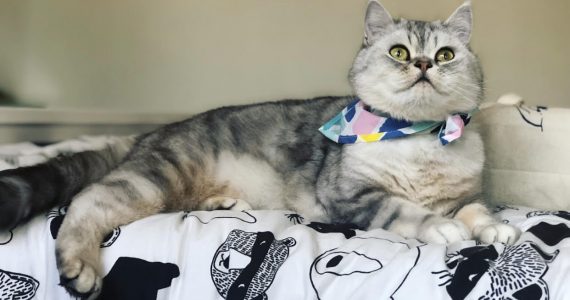Alphie the Hero (blood donor)
Recently we had a very sick, anaemic cat present to our clinic. She was in need of a blood transfusion and Alphie stepped up to save the day. Read on to learn about blood donation in cats.
What is anaemia?
Anaemia is when there is a drop in red blood cells in the circulation. Red blood cells transport oxygen around the body to the tissues. When the number of these cells drops it causes weakness and lethargy and in severe anaemia can even cause death.
Anaemia is caused by a range of conditions, including:
- Infections (parasitic, viral, bacterial)
- Blood loss
- Autoimmune disease
- Bone marrow disease
- Chronic disease e.g. renal disease
When is a blood transfusion required?
In cases of severe anaemia where the cat is at risk of dying, a blood transfusion is a life-saving treatment. As there is some risk to the donor cat we need to weigh up if the situation is appropriate. In cases where the anaemia has developed slowly, the body may have learnt to cope with the reduced level of blood cells – these cats often recover with other treatments. When the anaemia develops quickly and the cat is showing signs of severe illness , blood donation can buy them crucial time.
What are the risks to the donor?
Because of their small size compared to humans, we have to be careful about how much blood we take from the donor cat. If we take too much they can suffer from low blood pressure or we may reveal a hidden illness. To minimise these risks we carefully calculate how much blood can be safely donated.
The donor cat must be sedated for the procedure. To minimise this risk we perform a comprehensive health check on the donor cat and run a blood test to ensure there are no underlying conditions. Intravenous fluids are give to replace the lost volume of blood.
Is the donor suitable?
A donor needs to be healthy, ideally between 1-5 years old and greater than 4kg. They must be up to date with vaccinations and ideally indoor only.
Both the donor and the recipient must be blood typed. Cats have three blood types – A, B and AB. Similarly to humans they need to receive blood from a matching blood type to prevent a fatal reaction. Both Alphie and his recipient were type A, the most common blood type in Australian cats.
How is the transfusion done?
- The donor (Alphie) is sedated. Alphie was given oxygen by face mask during the procedure.
- The jugular vein is clipped and prepared with a surgical scrub.

- A butterfly catheter is inserted into the vein and 60ml of blood is collected into syringes primed with anticoagulant.

- Once enough blood is collected, the donor is attached to fluids and slowly woken up.

Franklin watched over Alphie as he recovered
- The blood is then given very slowly through a filter to the recipient . The patient is monitored very carefully for any signs of a transfusion reaction. Thankfully in our case we had no negative side effects.

- Once the recipient has fully recovered they can go home.

- Their red blood cell levels are checked every couple of days during the next few weeks until back to normal levels.
Alphie was a very brave boy while he was here and we are very grateful to Nurse Chelsea for allowing him to help a fellow feline.
If you want to join our list of blood donors (dogs can donate too!) please give us a call on 08 8340 0388

